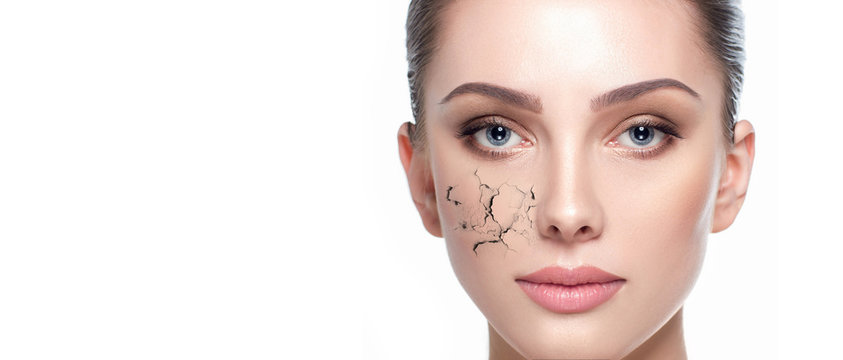Dry skin is a common issue faced by people of all ages. But did you know that your age significantly influences how dry skin should be treated? What works for a teenager might not be suitable for a senior, and vice versa. That’s why a one-size-fits-all approach rarely delivers lasting results. The way your skin retains moisture, responds to products, and regenerates changes as you grow older.
Fortunately, modern dermatology has evolved to address these age-specific concerns. Clinics offering Dry Skin Treatment in Islamabad understand the importance of personalized care based on age and skin type.
How Skin Changes With Age
As we age, our skin goes through various transformations. These changes directly impact how we experience dryness and how our skin responds to treatment.
👶 Childhood & Teenage Years:
- Skin tends to be resilient but can become dry due to external factors like harsh cleansers or climate.
- Teens may overuse acne products, stripping their skin of natural oils.
👩 Young Adults (20s–30s):
- Skin still produces ample oil, but environmental exposure and lifestyle choices (stress, poor sleep) may trigger dehydration or irritation.
- Early signs of sensitivity or eczema may appear.
👵 Adults (40s–50s+):
- Oil production naturally declines.
- Collagen and elastin levels drop, making the skin thinner and more prone to dryness and fine lines.
- The skin’s ability to retain moisture weakens.
👵 Seniors (60+):
- The skin becomes thinner, more fragile, and often itchy.
- Hydration loss is significant, and dryness can become chronic without proper care.
Understanding these age-related changes is key to customizing effective treatments.
Why Age-Specific Dry Skin Treatment Matters
You may think a good moisturizer is enough to fix dry skin. But for long-term results and comfort, treatment must evolve with your age. Here’s why:
- Younger skin regenerates faster, so it may respond well to lightweight hydration and mild exfoliation.
- Mature skin regenerates slower, and its barrier is weaker—meaning it needs richer, more reparative formulas.
- Seniors may need medical intervention if dryness leads to flaking, itching, or painful cracks.
In short, what your skin needs in your 20s is completely different from what it craves in your 60s.
Best Dry Skin Treatments by Age Group
Let’s take a closer look at how dry skin should be treated at different life stages.
1. Children and Teenagers
Teen skin is generally oilier, but dryness can still occur due to:
- Over-cleansing
- Use of acne products
- Cold, dry weather
- Sensitive skin or eczema
🌿 Recommended Treatments:
- Mild, fragrance-free cleansers
- Lightweight, non-comedogenic moisturizers
- Avoiding harsh toners and scrubs
- Regular use of SPF moisturizers
For teens with eczema or persistent dryness, clinical-grade hydration facials or gentle barrier repair therapies are often recommended.
2. Young Adults (20s–30s)
At this age, external stressors like work, sleep deprivation, or dehydration from coffee and screen time can affect skin health.
🌿 Recommended Treatments:
- Hyaluronic acid-based serums
- Hydrating facials with oxygen infusion
- Gentle exfoliation (once or twice a week)
- Light but effective moisturizers
- Lifestyle tweaks: better sleep, water intake, and sunscreen use
If dryness persists, dermatologists may recommend customized skin hydration therapy using vitamin-infused treatments.
3. Middle Age (40s–50s)
During this stage, natural oil production decreases, collagen levels dip, and fine lines begin to appear.
🌿 Recommended Treatments:
- Richer moisturizers with ceramides or squalene
- Microneedling with serums to improve absorption
- Prescription-based barrier creams or anti-aging hydrators
- LED therapy to stimulate cell renewal
- Gentle facial oils at night for added nourishment
This is also a great time to integrate targeted facials designed to hydrate and firm the skin.
4. Older Adults & Seniors (60+)
Skin becomes thinner, slower to heal, and prone to cracking or irritation. Dryness may even lead to dermatitis or infections if left untreated.
🌿 Recommended Treatments:
- Deep hydration facials with calming ingredients
- Regular use of emollient creams (e.g., urea or lanolin)
- Ointments to lock in moisture
- Prescription moisturizers for very dry, itchy skin
- Using humidifiers in living spaces
Seniors benefit most from regular dermatological checkups, especially if dry skin interferes with daily comfort.
Should Everyone Use the Same Products?
No—this is where many people go wrong. The skincare products your daughter uses may not work for your 50-year-old skin, and vice versa. Here's why age-appropriate products matter:
Age GroupMoisturizer TypeCommon Add-onsTeensGel or light creamAloe vera, glycerin20s–30sWater-based creamsHyaluronic acid, peptides40s–50sCreams with oilsCeramides, squalene60+Ointments or thick creamsLanolin, urea, niacinamide
When to See a Dermatologist
If dry skin is persistent, itchy, or painful—regardless of age—it’s best to consult a skin specialist. Don’t rely solely on over-the-counter fixes if:
- Skin feels tight even after moisturizing
- There’s flaking or redness
- You have eczema, psoriasis, or other skin conditions
- Skin breaks easily or gets infected
Professionals offering Dry Skin Treatment in Islamabad use diagnostic tools to evaluate your skin and build a treatment strategy based on your age, environment, and individual needs.
Final Thoughts
Age does more than just add candles to your birthday cake—it changes how your skin behaves, reacts, and recovers. Whether you're a teenager struggling with patchy skin or a senior dealing with constant dryness, your skin needs a tailored approach at every stage of life.





Comments